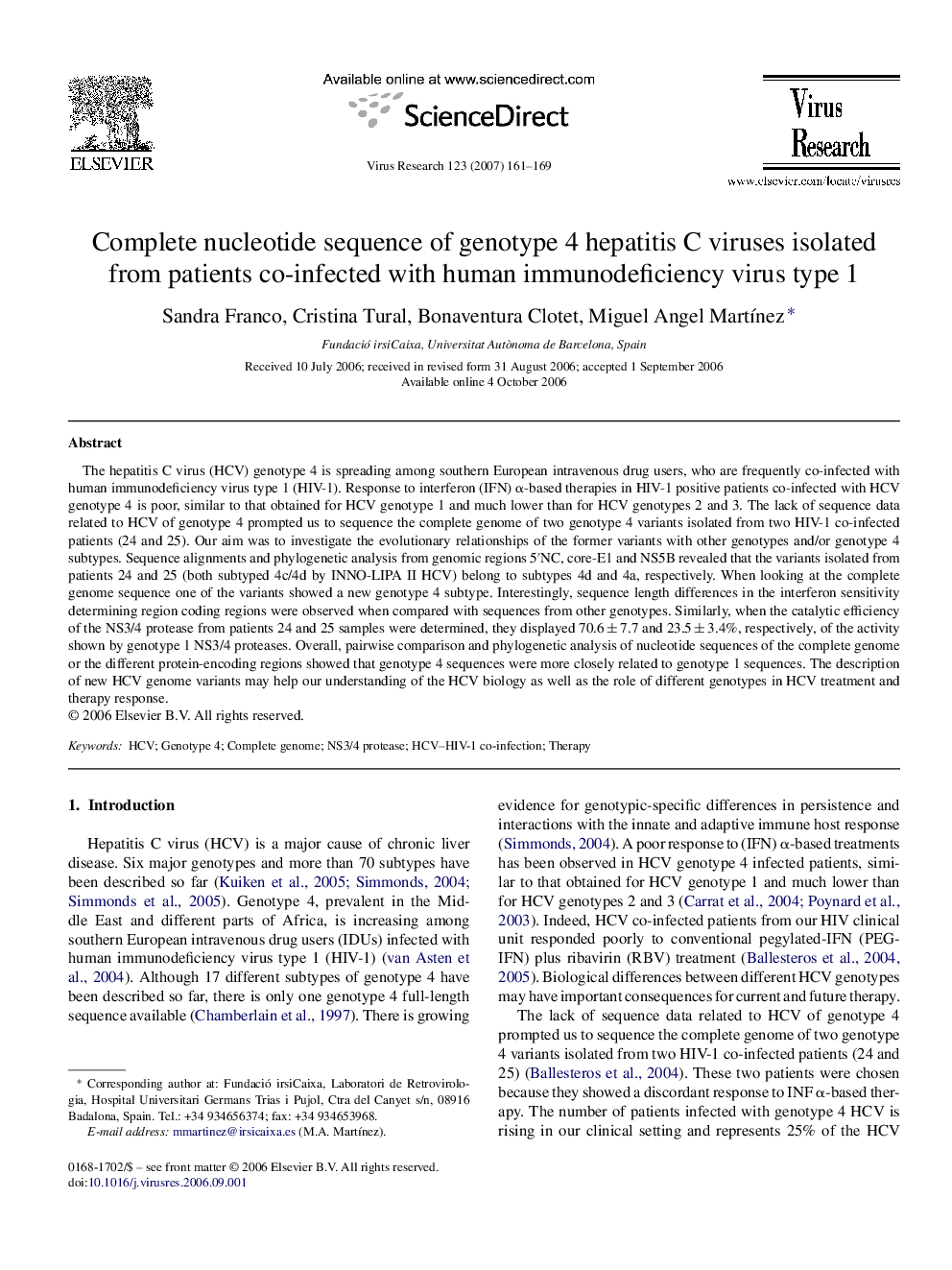| Article ID | Journal | Published Year | Pages | File Type |
|---|---|---|---|---|
| 3430864 | Virus Research | 2007 | 9 Pages |
The hepatitis C virus (HCV) genotype 4 is spreading among southern European intravenous drug users, who are frequently co-infected with human immunodeficiency virus type 1 (HIV-1). Response to interferon (IFN) α-based therapies in HIV-1 positive patients co-infected with HCV genotype 4 is poor, similar to that obtained for HCV genotype 1 and much lower than for HCV genotypes 2 and 3. The lack of sequence data related to HCV of genotype 4 prompted us to sequence the complete genome of two genotype 4 variants isolated from two HIV-1 co-infected patients (24 and 25). Our aim was to investigate the evolutionary relationships of the former variants with other genotypes and/or genotype 4 subtypes. Sequence alignments and phylogenetic analysis from genomic regions 5′NC, core-E1 and NS5B revealed that the variants isolated from patients 24 and 25 (both subtyped 4c/4d by INNO-LIPA II HCV) belong to subtypes 4d and 4a, respectively. When looking at the complete genome sequence one of the variants showed a new genotype 4 subtype. Interestingly, sequence length differences in the interferon sensitivity determining region coding regions were observed when compared with sequences from other genotypes. Similarly, when the catalytic efficiency of the NS3/4 protease from patients 24 and 25 samples were determined, they displayed 70.6 ± 7.7 and 23.5 ± 3.4%, respectively, of the activity shown by genotype 1 NS3/4 proteases. Overall, pairwise comparison and phylogenetic analysis of nucleotide sequences of the complete genome or the different protein-encoding regions showed that genotype 4 sequences were more closely related to genotype 1 sequences. The description of new HCV genome variants may help our understanding of the HCV biology as well as the role of different genotypes in HCV treatment and therapy response.
